
Depositional Record
Scope & Guideline
Charting the course of Earth's evolution through sedimentary records.
Introduction
Aims and Scopes
- Sedimentary Processes and Depositional Environments:
Research in this area covers the mechanisms of sediment transport, deposition, and the resulting sedimentary structures across various environments, including marine, fluvial, and lacustrine settings. - Stratigraphic Analysis and Geological History:
The journal emphasizes the importance of sequence stratigraphy and the geological history revealed through sedimentary records, providing insights into past climate conditions, tectonic activities, and ecological changes. - Biogeochemical Interactions in Sedimentation:
A unique contribution of the journal lies in exploring the interactions between biological processes and sedimentation, including the role of microbial communities in carbonate formation and diagenesis. - Paleoenvironmental Reconstructions:
The journal publishes studies that utilize sedimentological and geochemical data to reconstruct past environmental conditions, aiding in the understanding of long-term climate and ecological shifts. - Innovative Methodologies in Sedimentology:
The use of cutting-edge techniques such as micro-CT scanning, isotopic analyses, and machine learning in sedimentology is a consistent focus, reflecting the journal's commitment to advancing research methodologies.
Trending and Emerging
- Microbial Influences on Sediment Dynamics:
Recent publications emphasize the role of microbial communities in sedimentation processes, highlighting their importance in carbonate precipitation and diagenesis, which is becoming a significant area of research. - Impact of Climate Change on Sedimentary Processes:
There is a growing trend towards understanding how climate change influences sedimentary processes and depositional environments, including studies on sea-level rise and its effects on coastal and estuarine systems. - Advanced Geochemical Analyses:
The use of sophisticated geochemical techniques, including isotopic and elemental analyses, is on the rise, allowing for more precise reconstructions of past environments and sedimentary processes. - Integration of Remote Sensing and Machine Learning:
Innovative methodologies incorporating remote sensing and machine learning for sedimentological analysis and stratigraphic interpretation are emerging, reflecting technological advancements in the field. - Tectonic and Sedimentary Interactions:
Research focusing on the interplay between tectonic processes and sedimentation is gaining traction, as it provides insights into basin evolution and sedimentary architecture in active geological settings.
Declining or Waning
- Traditional Stratigraphic Correlation Methods:
There seems to be a waning interest in conventional stratigraphic correlation techniques, possibly due to the rise of more integrative and technology-driven approaches that provide enhanced resolution and insights. - Generalized Studies on Non-Marine Carbonates:
Research focusing solely on non-marine carbonate deposits without considering broader environmental contexts or interactions has become less prominent, as the field shifts towards more integrated studies. - Basic Sedimentological Descriptions:
Papers that primarily provide basic sedimentological descriptions without novel insights or applications appear to be declining, as the journal encourages more analytical and interdisciplinary approaches. - Single-Factor Analyses of Sedimentary Systems:
There is less emphasis on studies that analyze sedimentary systems based on a single factor (e.g., only physical processes), as the field increasingly recognizes the complexity of sedimentary environments.
Similar Journals
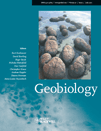
Geobiology
Advancing Knowledge in Earth and Environmental SciencesGeobiology, published by WILEY, is a prestigious journal at the forefront of interdisciplinary research in Earth and Planetary Sciences, Ecology, and Environmental Science. With an ISSN of 1472-4677 and an E-ISSN of 1472-4669, this journal has achieved remarkable recognition as evidenced by its Q1 categorization in multiple relevant fields, including Earth and Planetary Sciences, Ecology, and Environmental Science, according to the 2023 quartile rankings. Covering a diverse range of topics from biogeochemical cycles to the impacts of climate change on biodiversity, Geobiology serves as a vital platform for researchers, professionals, and students alike. The journal boasts impressive Scopus rankings, placing it within the top tiers of its fields, which is indicative of its significant influence and contribution to advancing knowledge. Although it does not operate under an Open Access model, Geobiology ensures widespread reach and accessibility, allowing for impactful dialogues within the scientific community. Researchers are encouraged to submit their findings and engage with cutting-edge studies to advance our understanding of the interplay between biological and geological processes.

SEDIMENTOLOGY
Elevating the discourse in sedimentology research.SEDIMENTOLOGY (ISSN: 0037-0746, E-ISSN: 1365-3091) is a premier journal published by Wiley in the United Kingdom, dedicated to advancing the scientific understanding of sedimentary processes, depositional environments, and the broader implications for stratigraphy and geology. With an impressive impact factor that places it in the prestigious Q1 category within both geology and stratigraphy, SEDIMENTOLOGY ranks among the top journals in its field, with Scopus rankings of #3 in Stratigraphy and #20 in Geology, reflecting its significant influence and the high-quality research it publishes. This journal, which conceives high-impact research contributions from 1962 to 2024, serves as an essential resource for researchers, professionals, and students alike, fostering a deeper exploration of sedimentary systems and providing a forum for the dissemination of novel findings. Although not open access, articles published in SEDIMENTOLOGY are critical for enhancing our understanding of sedimentation dynamics, which have far-reaching implications for natural resource management and environmental assessments.

BULLETIN OF GEOSCIENCES
Illuminating the Intersections of Geology and EnvironmentBULLETIN OF GEOSCIENCES, published by the prestigious Czech Geological Survey, stands as a pivotal resource in the fields of Earth and Planetary Sciences and Environmental Science. Since its inception in 2003, the journal has been committed to advancing knowledge through high-quality research, currently holding a commendable Q2 ranking in both disciplines. With its focus on diverse and innovative topics, BULLETIN OF GEOSCIENCES provides an essential platform for researchers, professionals, and students aiming to disseminate and access impactful studies. The journal is indexed in Scopus, ranking #78/195 in General Earth and Planetary Sciences and #110/233 in General Environmental Science, reflecting its significant contribution to academia. Publishing from Prague, Czech Republic, this journal invites contributions that illuminate the interactions between geological processes and environmental phenomena, ensuring an inclusive and accessible approach to crucial global issues.

GEO-MARINE LETTERS
Navigating the Frontiers of Environmental ScienceGEO-MARINE LETTERS, published by Springer, is a prestigious academic journal that has been a pivotal platform for the dissemination of innovative research in the fields of Earth and Planetary Sciences, Oceanography, Environmental Science, and Geotechnical Engineering since its inception in 1981. With an E-ISSN of 1432-1157, this journal has established itself in the Q2 quartile across multiple categories in 2023, indicating its influential position within the scientific community, as reflected by its Scopus rankings. While it currently does not offer an open access option, its rigorous peer-review process ensures the publication of high-quality research that contributes significantly to advancing our understanding of marine and geological sciences. Researchers, professionals, and students alike will benefit from the diverse scope of studies featured in GEO-MARINE LETTERS, making it an essential resource for those engaged in environmental and marine research. Situated in Germany, the journal's commitment to excellence continues to shape critical discussions and innovations in the field.
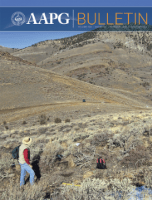
AAPG BULLETIN
Fostering collaboration in the pursuit of energy advancements.AAPG BULLETIN, published by the American Association of Petroleum Geologists, stands as a premier journal in the fields of Earth Sciences and Energy Engineering. With an impressive history spanning from 1968 to 2023, the journal has established itself as a valuable resource for researchers and professionals alike, focusing on a wide array of topics including geology, geochemistry, petrology, and fuel technology. Its robust standing in the academic community is reflected in its recognition as a Q1 journal across multiple categories such as Earth and Planetary Sciences, Energy Engineering, and Geology, with notable rankings in prestigious databases like Scopus. Although not an open-access journal, the AAPG BULLETIN provides vital insights and studies that advance our understanding of Earth processes and energy resources. It serves as an essential platform for disseminating cutting-edge research, fostering collaboration, and inspiring the next generation of scientists and engineers in the pursuit of sustainable energy solutions.
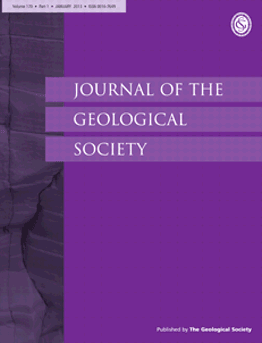
JOURNAL OF THE GEOLOGICAL SOCIETY
Connecting Scholars to the Heart of GeologyJOURNAL OF THE GEOLOGICAL SOCIETY, published by GEOLOGICAL SOC PUBL HOUSE, is a premier academic journal dedicated to advancing the field of geology. With a rich history dating back to 1845 and continuously published until 2024, this journal caters to a diverse audience of researchers, professionals, and students involved in earth sciences. The journal is recognized for its high impact factor, situating it in the top Q1 category in the field of geology, as indicated by its impressive Scopus rank of #49 out of 321, positioning it at the 84th percentile in Earth and Planetary Sciences. This esteemed scholarly platform promotes rigorous peer-reviewed research, ensuring that novel findings contribute to the global geological discourse. Although it operates under a subscription model, the journal's archive offers valuable insights for anyone pursuing excellence in geological research. The JOURNAL OF THE GEOLOGICAL SOCIETY stands as a vital resource for disseminating scientific knowledge and fostering educational growth within the field.
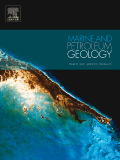
MARINE AND PETROLEUM GEOLOGY
Pioneering Research for Marine and Petroleum AdvancementsMarine and Petroleum Geology, published by Elsevier Science Ltd, is a premier, multidisciplinary journal that addresses critical advancements in the fields of geology, geophysics, oceanography, stratigraphy, and economic geology. With an impressive 2023 impact factor reflecting its influence across these vital domains, this journal maintains a prestigious standing, having achieved a Q1 ranking in multiple categories, including Economic Geology and Geophysics. Since its inception in 1984, it has been a key platform for researchers and practitioners to disseminate innovative findings, foster interdisciplinary dialogue, and enhance our understanding of geological processes affecting marine and petroleum resources. The journal is particularly valuable for those looking to stay abreast of the latest developments in Earth sciences, contributing to both academic knowledge and practical applications. Available through traditional subscription access, it serves as a cornerstone resource for scientists, students, and professionals eager to engage with cutting-edge research.
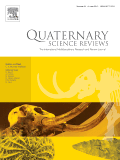
Quaternary Science Reviews
Fostering Innovation in Quaternary ResearchQuaternary Science Reviews is a premier international journal published by PERGAMON-ELSEVIER SCIENCE LTD, dedicated to the multidisciplinary study of the Quaternary period and its implications across a variety of scientific fields, including archaeology, geology, ecology, and environmental science. With an impressive impact factor that places it in the Q1 quartile across multiple categories such as Archaeology, Ecology, and Geology, it stands as a beacon of scholarly excellence. The journal, which has been in circulation since 1982 and converges its knowledge through to 2024, is instrumental for researchers and professionals seeking to explore the complexities of climate change, biodiversity, and earth systems. Though it does not currently offer Open Access options, its well-curated content remains vital for academic advancement and is accessible to a broad audience through institutional subscriptions. Positioned at the forefront of modern scientific inquiry, the journal fosters an environment for sharing pivotal findings and fostering intellectual discussions, making it an indispensable resource for students, practitioners, and researchers alike.
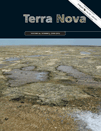
TERRA NOVA
Pioneering Insights into Geology and BeyondTERRA NOVA, published by WILEY, is a leading journal in the field of Geology, with a remarkable impact within the academic community. With the ISSN 0954-4879 and E-ISSN 1365-3121, the journal has been a pivotal platform for innovative research since its inception in 1989 and will continue its influence through to 2024. Ranked in the top tier (Q1) of its category for 2023, TERRA NOVA holds an esteemed position with a Scopus ranking of 67 out of 321 in Earth and Planetary Sciences, showcasing its dedication to high-quality, impactful scientific discourse. The journal covers a diverse range of topics within geology, providing valuable insights for environmental scientists, geologists, and industry professionals. By fostering an interdisciplinary approach, TERRA NOVA remains committed to advancing the understanding of geological processes and their implications for society. With a dedicated readership of researchers, professionals, and students, this journal is essential for those looking to stay abreast of the latest developments and trends in the field.

Geosphere
Exploring Earth's Layers: Where Knowledge Meets DiscoveryGeosphere is a premier open access journal published by the Geological Society of America, Inc., dedicated to advancing the fields of geology and stratigraphy. Since its inception in 2005, this journal has established itself as a critical platform for sharing high-quality research, evidenced by its robust positioning in the 2023 Scopus rankings, where it holds the 12th rank in stratigraphy and 75th in geology. With an impressive impact factor and a commitment to open access since 2018, Geosphere facilitates the dissemination of significant findings to a global audience, making it an essential resource for researchers, professionals, and students alike. The journal's scope includes a wide range of topics related to Earth and Planetary Sciences, encouraging interdisciplinary collaboration and innovation. Based in the United States, Geosphere continues to foster a community dedicated to understanding the Earth's processes and resources, ensuring that it remains at the forefront of geological research.